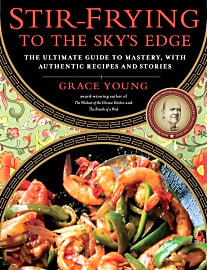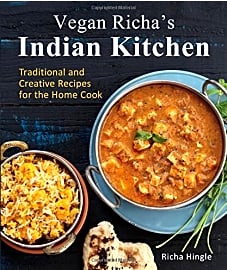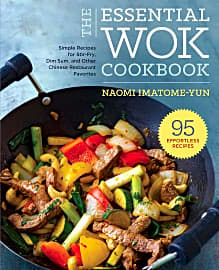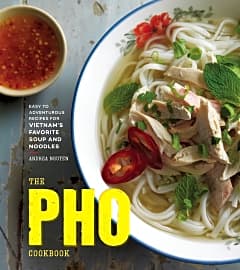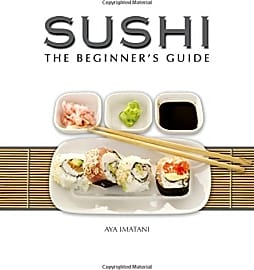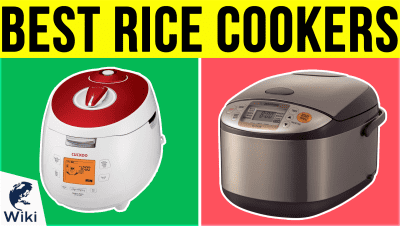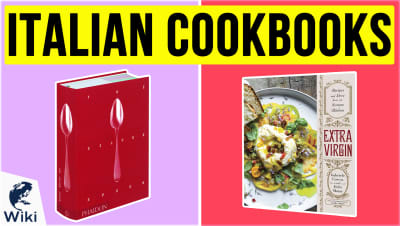The 10 Best Asian Cookbooks

This wiki has been updated 37 times since it was first published in September of 2015. When you finally get tired of grilled cheese sandwiches, why not spice up mealtimes by learning some new dishes from one of these Asian cookbooks? You can go on a culinary tour of India, Korea, Vietnam, Thailand, Japan, and China. Don’t worry, we’ve included something suitable for everyone, from the most basic beginner to the highly proficient and experienced cook. When users buy our independently chosen editorial recommendations, we may earn commissions to help fund the Wiki.
Editor's Notes
January 16, 2020:
We did our best to gather some of the most educational, practical, and well-rounded Asian cookbooks out there for this list, but keep in mind that Asia encompasses a vast array of ancient cultures with a mind-boggling diversity of food, so its best to consider our selection the tip of the iceberg when dipping a toe into these new and exciting cuisines.
If you're looking for hearty comfort foods, then The Pho Cookbook, Japanese Soul Cooking, Maangchi's Real Korean Cooking and Stir-Frying to the Sky's Edge are all great selections. Vegan Richa's Indian Kitchen is a solid choice not only for vegans but anyone looking to integrate more plants into their diet and those who want to explore the sensory world of Indian spices. Beginners will love Sushi: The Beginner’s Guide, Essential Wok Favorites, and Lucky Peach, while 101 Dishes is great for trying a bit of everything.
While we still love Pok Pok and think it offers a great insight into Thai cuisine (as well as the invaluable tip that using a rice cooker is not cheating), it's packed with so many stories and anecdotes that it feels less like a cookbook and more a memoir with some recipes included. This ends up giving it a bit of a jumbled feel, as well. We filled the vacancy with the immensely popular and well-received The Pho Cookbook, an excellent resource for those who have discovered and become obsessed with Pho, which has recently charmed Americans and become a household name for takeout.
Bringing Eastern Cuisine To Your Home
For just as so-called Western cooking has changed and evolved in recent years, so too has the approach to food preparation changed globally.
The term "Asian cuisine" can be used broadly to define the foods native to or inspired by a massive swath of the planet. Foods from regions as ostensibly disparate as southern India to Korea, Thailand to Japan, and Mongolia to Indonesia all fairly fall under the umbrella term of Asian food (sometimes also referred to as "Eastern"). This comes as no surprise, really, when one realizes that the greater continent of Asia accounts for more than 4.1 billion of the earth's inhabitants (the current global population is estimated to be around 7.5 billion people, for reference).
Given the diversity inherent, then, in Asian cooking, one might think that the best way to begin their own journey toward mastering a given cuisine is to simply find an Asian cookbook covering the foods of a region they already know they like. That, in fact, would be an oversimplification. For just as so-called Western cooking has changed and evolved in recent years, so too has the approach to food preparation changed globally. As just one clear example, consider a cookbook that would never have been seen just a generation ago, such as a guide dedicated to 100 percent vegan Indian cooking.
Also keep in mind that compared to many types of cooking (Americana and basic Italian, for example), adroit Asian cooking can be quite difficult to learn and master. A Japanese itamae (chef) typically works for five years before he or she even begins to prepare the rice used to make sushi; the full training may last twenty years. So be ready to be patient, and by all means start with a basic cookbook.
Once you know which general type of food you wish to prepare -- Japanese or Mongolian, e.g. -- it is then time to decide whether you approach the cuisine generally in terms of taste or preparation method. Many Asian cookbooks focus on the tools and techniques used in the preparation, such as the wok and stir-fry cooking or the gear used in the process of pickling foods such as is common in much Korean cooking. Other books approach their recipes in terms of ingredients used. Both approaches will likely involve a good deal of investment in new gear, new staple foods, or both.
Finally, consider whether you prefer a book the reads more like a manual or more like a volume of prose. Many cookbooks (Asian and otherwise, of course) weave a story into their pages, telling tales of the author's life, of a given place or time, or taking some other narrative approach. Other books are much more matter-of-fact, focusing on lists of ingredients and step-by-step instructions. There is no right or wrong approach, merely that which suits your preference.
The Basic Ingredients of Asian Cooking
When many people think of Asian food, the first ingredient that comes to mind is soy sauce. And while indeed this tangy, sweet, and salty sauce is prominently used in many dishes, it is not nearly so common in authentic cuisine as Americanized Asian food would lead one to believe. That said, you will want to have a bottle of good soy sauce on hand -- consider a low-sodium option (and note that some brands offer gluten-free soy sauces as well, a must for those with Celiac disease).
Keeping sesame seeds and peanuts can do much to enhance certain dishes, as can salt and even sugar.
The other sauces you should have on hand include a good chili sauce (Sriracha is considered a gold standard by many people), a fish sauce, a fermented rice cooking wine such as Mirin, sesame oil, and a rice vinegar. Also consider stocking several cans of coconut milk, particularly if you enjoy southeastern Asian cooking; Thai food in particular uses plenty of coconut milk.
Having a few lemons and limes on hand is also a good idea, though jars of their juice will serve if need be and will keep for many months in the refrigerator. Also make sure you have plenty of onions (white or yellow, ideally) as well as fresh cilantro, fresh ginger, and plenty of garlic, either fresh or in frozen cubes.
Also in the freezer should be plenty of chicken and pork, and perhaps some fish. As for non-perishable goods, you will need to have plenty of rice on hand. Also stock up on noodles (which will likely be made from rice). Keeping sesame seeds and peanuts can do much to enhance certain dishes, as can salt and even sugar. Also keep cans of chickpeas on hand for many Indian dishes.
Perfect Tools for Cooking Eastern Cuisine
If you already have a generally well-stocked kitchen, with a good array of knives, pots and pans, a decent stove and oven, and so forth, chances are you will not need any new tools or supplies to help you begin cooking Asian-style meals. But the right gear can not only make the process easier and more authentic, but can also make your cooking experience more enjoyable as well.
Much Asian cooking involves constantly moving foods, and a wooden tool will not scratch your pots or pans.
Many Asian meals are prepared in a concave large frying pan usually referred to as a wok. Many woks can be used with traditional gas or electric stoves, while others can even be placed over the heat of a charcoal grill or wood fire. Other woks provide their own heat, plugging in and using an electric heating element. If you want an authentic stir fry cooking experience, a wok is must-have tool.
A complete set of Japanese cook's knives comprises more than two dozen individual cutting tools. If you are not ready to make the massive investment into that level of arsenal, at least procure a decent sashimi knife (also called a shobu-bocho) for preparing fish, a gyuto (which translates as "beef sword") for sawing at meats and chopping thick vegetables, and a nakiri for chopping leafy vegetables and other more tender foods. If you plan to make your own sushi, also get well-made bamboo rolling mats.
Traditional Korean cooking is often done on a flat iron plate that is heated over a stovetop, grill, or open flames. These plates are ideal for searing fish fillets and the highly popular thick cuts of pork belly so often found in Korean cuisine. A standard griddle can be used, but many chefs invest in a Korean grill plate largely thanks to their standard grease drains, which make foods healthier and cooking cleaner.
Finally, make sure you own or buy a good wooden spatula. Much Asian cooking involves constantly moving foods, and a wooden tool will not scratch your pots or pans.




